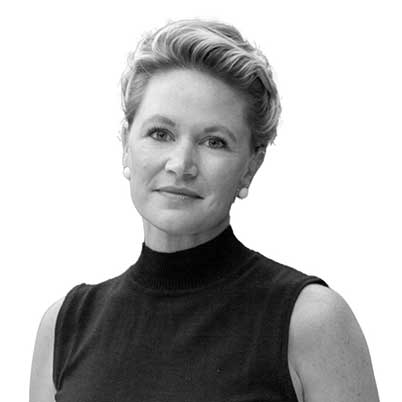The Fine Art Group offers hands-on internships for recent graduates and individuals with diverse backgrounds in the art world. This program provides first-hand experience in TFG’s appraisal, art advisory, agency, marketing, and business development divisions, in which the interns work directly with the corresponding advisors and teams.
Selected candidates must possess an exceptional work ethic, excellent time management skills, and a detail-oriented and professional demeanor, taking accountability for their tasks. Candidates should demonstrate an interest in art through work experience or studies and be motivated to excel in the gallery and auction market. Proficiency in Apple Mac OS, MS Office, Photoshop, and internal
INTERNSHIP POSITIONS
TFG internships last from 3-4 months and are offered as full-time positions.
Appraisal Management Intern
In-person only position – Philadelphia Metro Area
The Appraisal Management Intern will support the Appraisal and Advisory Departments by working with our team of experienced art appraisers. We seek a detail-oriented intern with a keen interest in and knowledge of art and antiques. The selected candidate should also have an outstanding work ethic, efficient time management, and be a team player.
Intern responsibilities include:
- Researching and cataloging antiques.
- Assisting with on-site client visits and appraisals.
- Formatting/editing documents and images for internal system tracking.
The intern will also collaborate with other departments to provide administrative and operational support.
Advisory Intern
Hybrid position allowed – New York City
The Advisory Intern will support the Advisory Department by working with our team of experienced art advisors. We seek a detail-oriented intern with a keen interest in and solid background in art history and antiques. The selected candidate should have an outstanding work ethic and time management skills.
This position is responsible for researching and cataloging antiques, updating client information in the CRM system, and maintaining 1stDibs accounts. The selected candidate is also responsible for creating client presentations, editing photos and documents, photographing items and artworks, and placing global exhibition consignments. They will also collaborate with other departments, including marketing and general operations, to provide administrative and operational support.
Art Marketing & Business Development Intern
Hybrid position allowed – East Coast
The Art Marketing Intern will support the Marketing Department and work closely with the Business Management and Operation departments. We seek a detail-oriented intern with an interdisciplinary background in art and marketing/management with a keen interest in art and antiques. The ideal candidate should have experience in design and marketing platforms such as Adobe Creative Suite, Mailchimp, or similar newsletter software, and WordPress. They should also have an outstanding work ethic, efficient time management, and be collaborative.
The Art Marketing Intern will analyze marketing data and produce reports, research digital and social media marketing keywords, and maintain websites and mailing lists. The Marketing Intern is also responsible for social media graphics, creative designs in Adobe Creative Suite, and some minor video editing. They will collaborate with the Advisory and Appraisal teams and general operations to provide administrative and operational support.
Read more about the open internships on our careers page. Please email your resume and cover letter to jobs@fineartgroup.com. Currently, we are not accepting phone calls about available positions.
Managing a growing collection can prove to be a daunting task for even the most seasoned collector. “How do I keep track of my purchases? How do I coordinate a museum loan or exhibition? When should I get an appraisal? How do I find a conservator that fits my needs?” As a Collections and Inventory Associate, I find the answers to these questions and much more. Working with The Fine Art Group’s global team of specialists, we create a bespoke plan for each collection and manage every object with the utmost care.
SERIOUS COLLECTORS NEED PROFESSIONAL COLLECTION & INVENTORY MANAGEMENT
WAYS THE FINE ART GROUP CAN SUPPORT IMPORTANT COLLECTIONS
- Inventory Management
Organizing and maintaining a comprehensive inventory of the client’s collection, including detailed records of each object, its provenance, condition reports, and relevant documentation. Our team will enter all documents into a collections database accessible to the client, their representatives, and The Fine Art Group.
- Appraisals & Valuations
Coordinating regular appraisals and valuations to provide clients with up-to-date information on the value of their collections.
- Logistical Oversight
Managing the logistics involved in handling and transporting artwork, including coordination of packing, shipping, and installation, ensuring proper care and adherence to international best practices.
- Disaster Planning
Implementing measures to protect the collection from potential risks such as natural disasters, fire, theft, or damage and developing emergency response plans, and coordinating with relevant experts for conservation and restoration in case of an incident.
- Museum Loan Advice
Providing guidance and assistance in navigating the process of lending artworks to museums and institutions, managing the logistics, insurance requirements, and legal considerations involved in loan agreements.
- Security Consulting
Advising on what protections a collection requires when on display, in storage, or during transportation and assisting in acquiring needed services.
- Philanthropic Strategy
Assisting clients in leveraging their collection for philanthropic purposes, offering guidance on charitable donations, art-related events, and collaborations with cultural institutions or nonprofit organizations.
- Exhibition Strategy
Working with our specialists to develop strategies and recommendations for exhibiting collections, including curatorial advice, display techniques, and exhibition planning to maximize the collection’s visibility and impact.
- Introductions to Vetted Industry Experts
Liaising clients with experts related to subjects such as tax planning, conservation, restoration, academic researchers, and scholars.
- Art Finance
Supporting through TFG’s Art Finance department for temporary finance for further collection development.
RELATED ARTICLES
- New Public Sculpture for Guangzhou, China
- The Secrets to Maintaining Large Collections
- The Fine Art Group’s Art-Secured Financing Solutions Continue to Meet Increasing Client Demand
OUR SERVICES
The Collections Management division at The Fine Art Group, represented by Luke Jacobs as the Collections & Inventory Services Associate for the Americas, aims to provide comprehensive and customized solutions to support clients in managing their collections effectively.
Selling your collection of art, jewelry, and other valuable assets can be a significant financial transaction. Therefore, it is crucial to understand the different options available to maximize your financial result.
It can also be an emotionally fraught process where the seller would benefit from the outside perspective of an art advisor looking out for the client’s best interest. There are various factors, from finding the right sales venue to getting the best price for your pieces, to consider. With knowledge, careful planning, and expert advice, you can ensure that you get the best possible financial result from selling your prized collection.
Join us to watch Kerry-Lee Jeffery, Colleen Boyle, Anita Heriot, and Kate Waterhouse discuss ways to maximize return of investment when selling collections of art, jewelry, wine, and other valuable collectibles.
DATE
- August 17th, 2023 – 1PM EST/ 10AM PST
LENGTH
- 30 to 45 minutes
FORMAT
- Zoom webinar
RELATED CONTENT
- Selling Jewelry & Watch Collections
- 10 Reasons to Work with an Advisor for a Successful Sales Process
- Visit The Fine Art Group’s Webinar Library
OUR SALES AGENCY SERVICES
The Fine Art Group’s dedicated Agency team can add significant value through seamless sales management, financial reporting and marketing optimization.
We take care of every detail of the sale process, from initial valuation all the way through to post-sale reporting and analysis, ensuring that the client communication and involvement is tailored throughout.
See our Sales Agency Case Studies to learn more about our services.
MAJOR WEATHER EVENTS AND YOUR VALUABLES
El Niño 2023 is here, according to the US National Weather Service. While this natural weather phenomenon could make the Atlantic hurricane season below average, that doesn’t mean you have nothing to worry about. The United States is experiencing record heat waves, flooding, and forest fires. El Niño could cause further significant weather events in the winter, bringing heavy precipitation to Southern California and the US Gulf states (Texas, Louisiana, Mississippi, Alabama, and Florida). That translates to storms, flooding, and in California, mudslides.
YOU HAVE TIME TO PREPARE IF YOU ACT NOW

Major weather events like hurricanes, floods, and wildfires can pose significant risks to your art and valuable possessions. Ensuring they are adequately insured and properly documented is crucial in safeguarding your investments.
We highly recommend calling your insurance broker to verify insurance coverage for all tangible assets. Determine exactly what insurance you have, especially flood insurance. Most property damage caused by weather events results from strong winds, heavy rainfall, and storm surges.
HOW TO REDUCE RISK & LOSS FROM MAJOR WEATHER EVENTS
STEPS TO TAKE BEFORE NATURAL DISASTERS
- UNDERSTAND THAT IT CAN HAPPEN TO YOU
With the escalated risk of natural disasters in recent years, managing risk to a collection has become a top concern for many collectors in high-risk areas. In addition to threats such as wildfires, hurricanes, and tornadoes, collectors must also prepare for unexpected events like a pipe burst or an electrical fire. In these unfortunate circumstances, unbeknownst to most, the owner is responsible for establishing their belongings’ value and comprehensive inventory. Therefore, proper inventory management and up-to-date appraisals are the crucial first step to prepare for the unexpected.
- VERIFY YOUR INSURANCE COVERAGE
Discuss insurance coverage with your broker. Review your policy for costly gaps in coverage.
If moving any fine art, verify that your collection is insured during transit. Some insurance companies have a waiting period before activating policy changes, so plan ahead.
Consider obtaining specialized coverage, such as fine art insurance or additional riders, to ensure comprehensive protection. Evaluate factors like coverage limits, deductibles, exclusions, and policy terms to guarantee sufficient financial reimbursement in case of damage or loss. - DOCUMENT YOUR ART, JEWELRY & OTHER VALUABLES
What do you have? Where is it? What did you pay for it? Do you have a recent Insurance Appraisal?
Update your inventory with photographs and copies of your receipts. Outdated appraisals and incomplete inventories can leave a collector scrambling to piece together information and significantly underinsured. With the burden of proof ultimately falling into the owner’s lap, it is clear why all successful asset evacuation plans must begin with inventory management and understanding your collectibles’ retail replacement (insurance) value. The Fine Art Group appraisal and collection management team will work with you to conduct a complete inventory audit and ensure that the insurance values are current. - HAVE A PLAN TO RELOCATE YOUR TANGIBLE ASSETS
Establish a plan to relocate valuables. Select a reputable fine art shipper to move valuables to a predetermined secondary location out of the path of the storm, preferably a vetted art storage facility. The Fine Art Group can assist clients in preparing evacuation plans ahead of extreme weather events.
For clients in states where insurance companies are pulling out, evacuation plans are even more crucial to safeguarding their assets. - THE AFTERMATH: DAMAGE & LOSS
In the event of damage or total loss to personal property, a Damage & Loss appraisal can be conducted. The Fine Art Group’s Damage & Loss Appraisals include:
– Retail replacement value (RRV) before and after damage
– Condition Analysis
– Conservator recommendations and cost quotes
– Diminution in value due to the damage and subsequent restoration
– In the case of a total loss, our in-house advisors will assist in replacing the object
FURTHER INFORMATION
- Watch Art, Cars & Collectibles: How to Mitigate Risk Before Disaster Hits
- Read more about how climate change affects art and how collectors protect their investments.
- Protecting Your Valuables From Loss
OUR SERVICES
Understanding value is the cornerstone to effectively managing a collection – and at The Fine Art Group, this understanding enables us to work as trusted fiduciaries for our clients and their objects. We are experienced in providing appraisals for various purposes and are specialists in unique and complicated appraisal scenarios.
8 Ways The Fine Art Group Can Assist Clients Selling Luxury Wearables
THE JEWELRY AGENCY PROCESS
- What do you have and where is it?
All families have jewelry and watches, whether we realize it or not. Typically, a family has jewelry in the family vault, and the age-old adage applies: ‘Out of sight, out of mind.’ My own family is guilty of this.
Your grandmother’s natural saltwater pearl necklace likely resides in the vault with grandfather’s Patek Philippe pocket watch and perhaps a colored gemstone of important origin or even a few gold coins. Ask questions about the family legacy and better understand the collective priorities. - Are you sure you want to sell?
The first question should be whether the piece(es) will continue to be worn. If the family members feel they will be wearing and enjoying the articles, please let us know, and The Fine Art Group will be happy to discuss the process of a retail replacement valuation (otherwise known as an insurance valuation).
However, if family members are not interested in keeping and wearing the pieces, we highly recommend discussing the works with our teams and obtaining a better market overview. We can discuss which ends of the market have the most traction with buyers on the secondary market (for example, auction market or private sale through The Fine Art Group). - How do you know what auction house is appropriate for your assets?
I genuinely enjoy counseling our clients through the sale process. We begin by finding the right auction house. Not all auction houses are created equal, and, most importantly, the big two (Sotheby’s and Christie’s) might not always be the most appropriate fit for the piece or collection.
Our team will explore the options with you, finding the most robust buyer pool available, and determining which firm has proven to hold a market share for these exact pieces. We want your pieces to shine and be as unique to those bidding as they are to you! - Your sales venue is picked, but what other details need to be explored?
Negotiating sale terms for these highly emotional assets that our families possess can be a delicate dance.
I like to explore not simply sale commissions but which end of a sale season might be best for the jewelry or watches (holiday season vs. early fall or late spring can make a difference).
For example, does the Van Cleef and Arpels Alhambra necklace come with the original boxes and are in good condition? If the answer is yes, let us consider taking it to an auction before the holiday season, when bidders may be more keen on bidding an extra increment (or two or three) on this piece to have it available for the gifting season. - How does the sales venue intend to advertise your assets?
We have found that this needs to be addressed when reviewing results of clients who decided to go through the sale process alone. If the consignor agrees it is essential, we can make requests before the sale. Even placement within the order of an auction can make a difference in the price realized on the day of sale.
I like to use the example of the full jewelry ‘suite.’ Assume that your mother purchased her jewelry in full parures (suites or sets) from Cartier in the early 1990s. Today’s collectors do not typically buy a complete matching set of ear clips, bracelets, or necklaces with brooches or rings, even though they once did so. Most bidders want one, two, or three pieces out of a parure (traditionally, there are as many as five) but likely do not need all of them. Personally, I adore earrings and bracelets but would probably not wear the necklace or brooch. Ideally, if the suite is broken up, it often requires the bidders keen to keep the suite together to spend a little more to keep the parure together. At the same time, this requires the bidders who only want a single piece (or two or three) to bid higher on the exact items they will cherish and appreciate daily. - The Fine Art Group’s Pre-Sale Concierge Services
It can be hugely disappointing, but not unusual, to hear from a client after the sale, “I would have sold it for that…” after the piece goes unsold.
The Fine Art Group team checks in and offers updates leading up to and during the sale exhibition and on auction eve. Consignors should always have a market check before the auction to determine what ‘pre-auction’ interest might look like.
I have often had clients who would have benefitted from understanding who has seen their pieces and how the reception may have been. If there is concern that the jewelry or watch may fail to find a happy home, the client should know and be offered the opportunity to amend the reserve price appropriately if needed.
Conversely, if you are happy to have a piece come home, we also want to negotiate that. - What are extended payment terms?
Many auction houses have a special list of highly vetted clients who have been offered the opportunity to pay on ‘extended payment terms’ (EPTs). This means the payment may occur in increments rather than a single lump sum approximately 40 days from the date of sale.
I want to say again: this exceptional group of bidders may review the sale and request payment terms ahead of the day of the auction that falls outside the typical period of ‘full payment.’
This request is typically an excellent sign for the consignor. It means that the potential bidder(s) know that they may need to ‘reach’ financially on the day of sale and has the means to do so if offered the flexibility to pay in three partial payments.
More often than not, I counsel the consignor to take these terms since I know the vetting process well, and it is highly stringent. Most importantly, successful bidders with these terms are only allowed access to the pieces once they pay in full. It remains in the care of the auction firm until payment has been settled. - Delivering the happy news.
I love sale days, either at auction or in private sale. It is always a victory, even in the most modest of consignments.
It is an honor to be included in this experience. Our team members understand the delicate emotions surrounding selling family heirlooms and prized possessions for collectors and family members. Shepherding your most cherished assets through the sale process is crucial to you as the seller, and I promise I am there with you every step.
RELATED CONTENT
OUR SALES AGENCY SERVICES
The Fine Art Group’s dedicated Agency team can add significant value through seamless sales management, financial reporting and marketing optimization.
We take care of every detail of the sale process, from initial valuation all the way through to post-sale reporting and analysis, ensuring that the client communication and involvement is tailored throughout.
See our Sales Agency Case Studies to learn more about our services.
Patti Wong, Founder of Patti Wong & Associates, and her successful acquisition of Gustav Klimt’s Dame mit Fächer (Lady With a Fan) on behalf of an anonymous Hong Kong client for a record-breaking $108.4 million was the main topic of Artnet News’ article, “Who Bought the Mysterious Klimt at Sotheby’s? An Equally Enigmatic Hong Kong Power Broker, Some Believe.”
Philip Hoffman, Founder and CEO of The Fine Art Group, spoke with Katya Kazakina of The Art Detective about clients’ interests in the most recent May auctions for the article.
Click here to read the full article on Artnet News.
Newsfeed image credit: Gustav Klimt, Dame mit Fächer (Lady with a Fan) (1917-18).
Anita Heriot, The Fine Art Group’s President of the Americas, speaks with Bowdoin Magazine, a publication for Bowdoin alumni, about her experience in the ever-changing art world and her role at The Fine Art Group.
Click here to read the full article in Bowdoin Magazine.
Newsfeed image credit: Cover of Bowdoin Magazine’s Spring/Summer 2023 issue.
Written by Zhanna Ter-Zakaryan, Associate, Art Advisory; Luke Jacobs, Collections & Inventory Services Associate; Charles Curtis, Wine Specialist & Advisor; Greg Adams, Digital Assets Consultant
THE SCOOP: #14 – June 29th, 2023
Our experts delve into the allure of the collectible whiskey market and its appeal to the next generation of collectors. We then focus on highlighting rising LGBTQIA+ artists and exploring their contributions to the art world. Finally, we provide an update on the exciting NBA NFT collectibles market, where traditional sports card collectors are venturing into the digital asset marketplace.
Whether working with a first-time buyer or an experienced collector, we support our clients across all aspects of the acquisition process. If you are seeking assistance with your collections, please contact our Advisory team.
COLLECTIBLE WHISK(E)Y
BY CHARLES CURTIS
Distilled spirits are among the hottest categories of collectibles, and whisky (or whiskey) leads the pack. To clear up the matter of spelling, it is generally the case that Scottish producers will spell their spirit ‘whisky,’ and American and Irish distillers will usually spell it ‘whiskey.’ However, this is not universally the case. With the proliferation of high-end labels, collectors interested in exposure to this market are spoiled for choice. However, a bit of background is in order since not all whiskey is created equal.
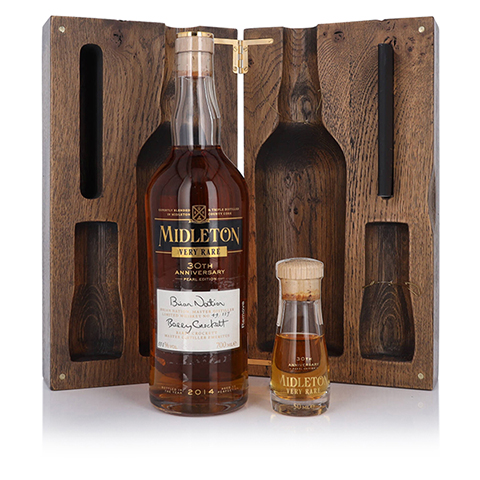
WHAT MAKES A WHISKEY WORTH COLLECTING?
Whisky is commonly purchased for consumption. To be considered collectible, a whiskey must have a viable secondary market. This presents a difficulty for U.S.-based collectors since alcohol is tightly regulated in the United States, distilled spirits even more so than wine. Despite this inconvenience, the collectible market continues to boom. On May 11th, Sotheby’s New York presented ‘The Legacy Collection’, a single-owner sale of 142 lots that is expected to garner between $1.4 and $1.9 million. The results suggest that collectors will pay up for the bottles they need, while there will be room for new collectors to get in at a reasonable price point. While the 53-year-old Macallan distilled in 1948 and a 40-year-old distilled in 1939 made $40,000 per bottle with premium or more, other similar whiskies did not sell. Sotheby’s regularly auctions spirits, as does independent wine and spirits specialist Acker, whose recent ‘Distilled’ sale was on May 31st. Most U.S.-based collectors still try to assemble a collection by buying bottles on release. To succeed at this strategy, knowing which bottles are most sought-after is necessary.
The largest share of the collectible market goes to Scotch whisky. Although there are today 143 distilleries operating in Scotland, not all of these produce collectible spirits. The Scotch whisky with the most brand visibility is certainly Macallan. The world record for the most expensive bottle ever sold is for the 1926 Macallan, sold at auction by Sotheby’s London in October of 2019 for £1.5 million. Other collectible Scotch whisky brands include Port Ellen, Brora, Ardbeg, Bowmore, and Springbank. Quality is a factor, but in the world of whisky, scarcity drives prices even greater than in other categories. The 1926 Macallan was one of 40 bottles produced, while Port Ellen and Brora are examples of distilleries that have closed, known as ‘silent stills.’
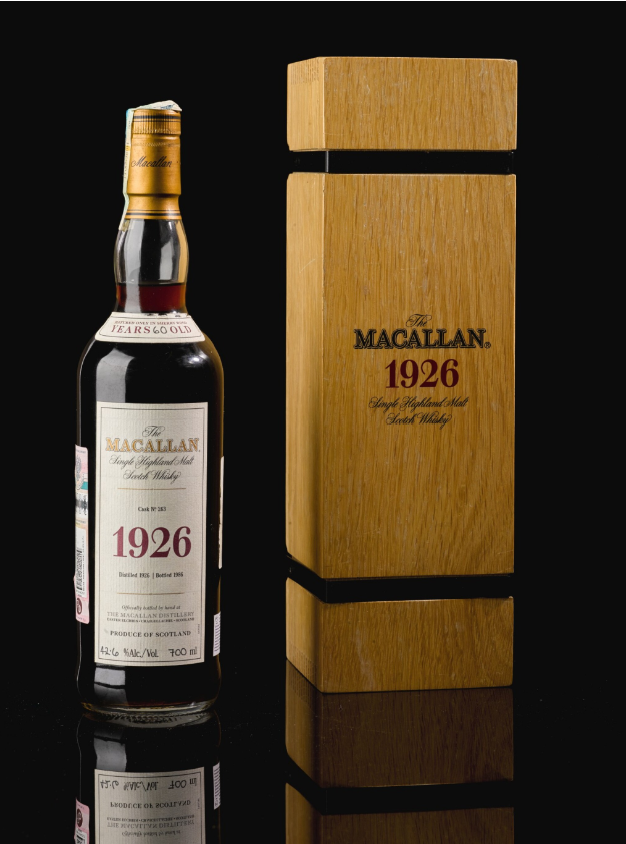
October 24, 12:00 PM EDT
ESTIMATE: 350,000 – 450,000 GBP
LOT SOLD: 1,452,000 GBP
Courtesy of Sotheby’s.
According to the Scotch Whisky Association, exports totaled £6.2bn in 2022 and reached 180 countries worldwide. However, the combined impact of Brexit and global economic and political instability have disrupted the secondary market for rare whisky, occasioning a correction of nearly 20% across all types in the past twelve months, according to Whiskystats.com. This website was established by Johannes Moosbrugger in the Netherlands, whose index demonstrated an increase of +191.27% since inception (January 2013) after considering the recent market correction.
The Scots sell more whisky than the American and Japanese distillers combined, but these categories are also very collectible. Worldwide, Japanese whisky is also a dominant force. Brands like Karuizawa, Yamakazi, and Hanyu are the stuff of dreams for initiates of collectible whisky. The most expensive bottle of Japanese whisky is the Yamakazi 55-year-old, which sold for HK$ 6.2 million ($795,000) in August 2020.
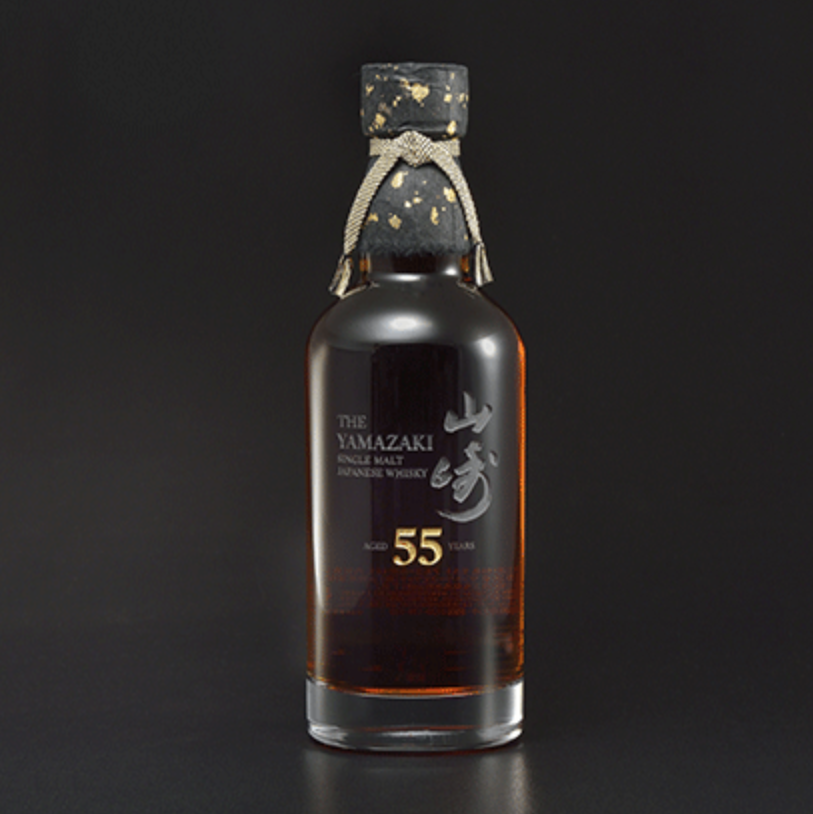
SOLD FOR: HK$6.2 million (US$795,000).
Courtesy of Thespiritbusiness.com.
AMERICAN WHISKEY & YOUNG COLLECTORS
American whiskey also has its admirers. Perhaps the most sought-after brand is Pappy Van Winkle. Sotheby’s New York sold a bottle in December 2022 for $52,000, an astonishing 17 times more than its presale estimate. In March of 2022, the house conducted a sale exclusively dedicated to American whiskey, which sold for a combined $1.6 million. Sotheby’s noted that the category appeals to a youthful demographic, with more than 40% of the buyers under 40 years of age. Other brands of collectible American whiskey include Colonel E.H. Taylor, Michters, Eagle Rare, A.H. Hirsch, and Willett Family. Of particular note is the annually-released Buffalo Trace Antique Collection, which includes George T. Stagg, Sazerac 18 Rye, William Larue Weller, Eagle Rare 17, and Thomas H. Handy.
The database Whiskystats.com was established by Johannes Moosbrugger in the Netherlands. This index demonstrated an increase of +191.27% since inception (January 2013) after taking into account the market correction of -18.03% in the past twelve months.
CELEBRATING PRIDE: 5 YOUNG CONTEMPORARY LGBTQIA+ ARTISTS
BY ZHANNA TER-ZAKARYAN AND LUKE JACOBS
As our world and culture continue to evolve, artists in the LGBTQIA+ community are finding more acceptance than ever within the art world when it comes to expressing their identities and cultures. In celebration of Pride Month, below we spotlight five young LGBTQIA+ artists pushing the contemporary art world forward. By exploring their practices, this edition of The Scoop aims to highlight these artists’ professional achievements and their art historical contributions, both in the LGBTQIA+ community and the art world as a whole.
DORON LANGBERG
Radiant in color and quite often monumental in scale, Doron Langberg’s (b. 1985) paintings explore serenity, intimacy, and closeness. The portraits of his friends and lovers, their bodies often intertwined amongst themselves and with the surrounding landscapes, are conceived directly from life and are often painted en plein air. For the artist, the sense of a ‘living person’ and a lived experience in his paintings is essential. In a way, Langberg consistently blurs the line between abstraction and figuration, as his portraits are dissolved within their surroundings, evoking a sense of closeness and queer sensuality. As the artist puts it, “Queerness for me is not just a sexual experience, but a way of being in the world which affects every aspect of my life. Using intense colors and different paint textures and marks to create these everyday scenes, I want to connect with a viewer by speaking to our most basic commonalities – our bodies, our relationships, our interiority – rather than the social categories that may separate us.“
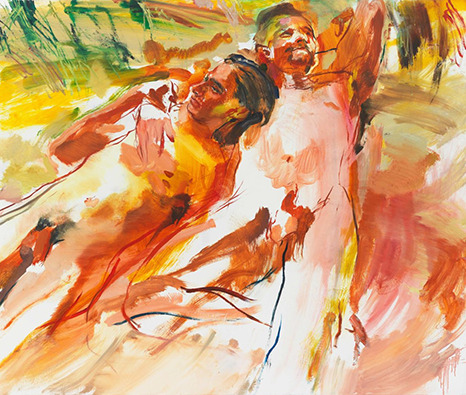
Courtesy of the artist and the Victoria Miro Gallery, London.
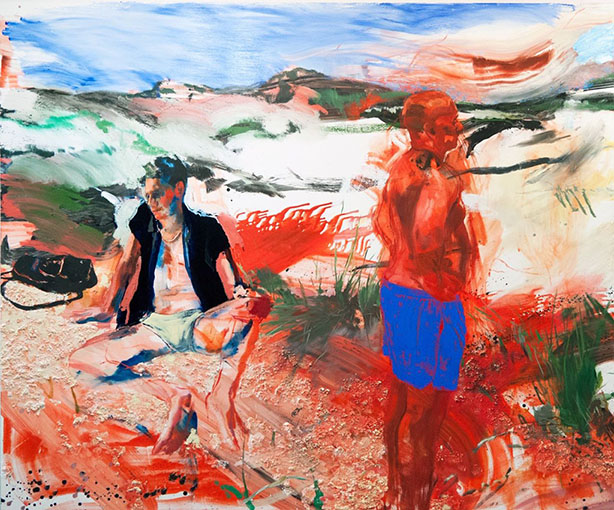
Courtesy of the artist.
Doron Langberg currently works and lives in Brooklyn and was born in Yokneam Moshava, Israel, in 1985. The artist received his MFA from the Yale University School of Art and his BFA from the University of Pennsylvania. His works are currently on view at Rubell Museum in Miami (through November 2023), and previous group exhibitions included the Institute of Contemporary Art in Boston, the Institute of Contemporary Art, Miami, and RISD Museum, Rhode Island, among others. Langberg held his first solo exhibition at Victoria Miro in London in 2021 and is represented by the gallery.
SALMAN TOOR
Langberg’s contemporary and friend Salman Toor (b. 1983) focuses on the representation of day-to-day moments of queer men within cosmopolitan and domestic settings. The artist’s subjects, often engaged in routine activities, are fictional in nature but are meant to be versions of himself, his friends, and loved ones. As Toor places them in these mundane environments, he deals with the complex, multi-layered idea of what it means to be queer in society while also playing on how relatable these depictions might seem to the viewer. The rich brushstrokes pay homage to the Dutch masters, and the vibrant color palettes evoke a sense of ambiguity, vulnerability, and even anxiety, as the environments depicted by Toor may or may not be welcoming.
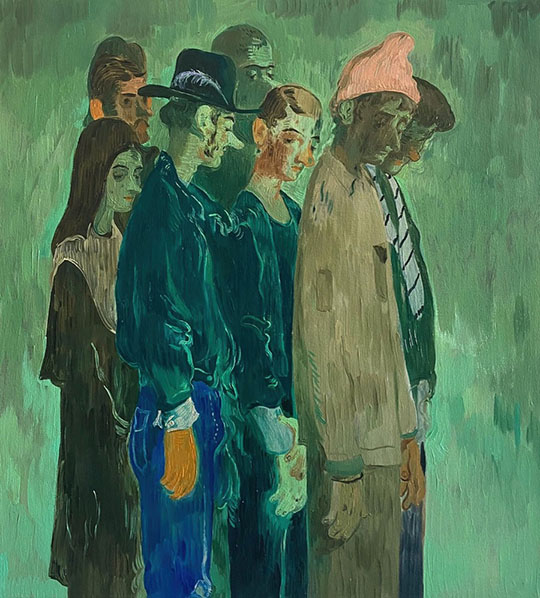
Courtesy of the artist and Luhring Augustine.
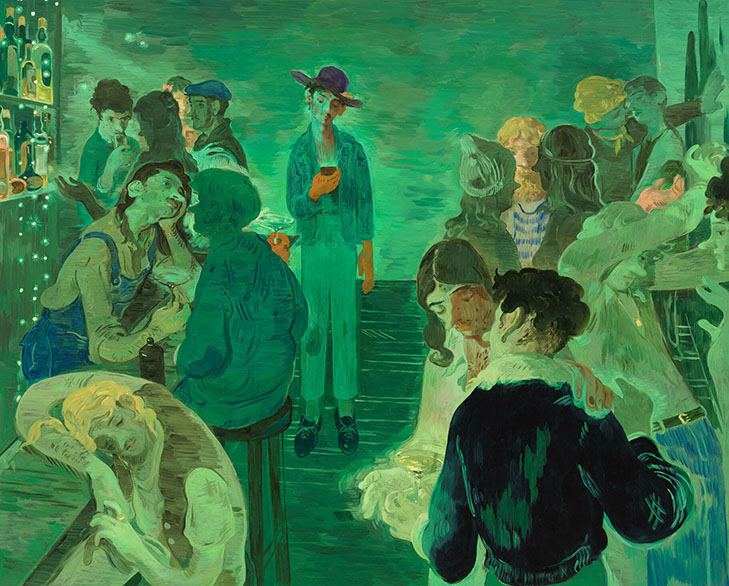
Courtesy of the artist and Luhring Augustine.
Born in Lahore, Pakistan, in 1983, Toor lives and works in Brooklyn. He studied painting and drawing at Ohio Wesleyan University and received his MFA from Pratt Institute in New York. Toor’s solo exhibition, originally on view at the Baltimore Museum of Art in 2022, is currently at the Tampa Museum of Art in Florida (through June 2023). Other solo exhibitions include the Whitney Museum of American Art, New York (2020-1), and at Luhring Augustine Gallery, New York (2021), which also represents the artist. Toor’s works have appeared in various public collections, including the Frick Madison, New York, and the Hayward Gallery, London.
RF. ALVAREZ
The notion of home is ever-changing, and for RF. Alvarez (b. 1988), this includes the physical environments, people, memories, and experiences through which this concept of belonging is perceived. Alvarez’s paintings depict safe and intimate spaces the artist has created with his husband and loved ones — environments that allow one’s identity and sexuality to be celebrated and fluid. Often placed in nocturnal and enigmatic settings, the figures are captured in fleeting moments, be it an intimate embrace at a large dinner party or a glimpse of the artist’s husband waking in the morning. The concept of home and belonging not being tied to a physical place goes beyond these shared moments as the artist explores his experience as a queer man of Mexican and Texan heritage. As Alvarez puts it, “A lot of my work is about the fallacy of the cowboy figure and its paper-thin vulnerability.”
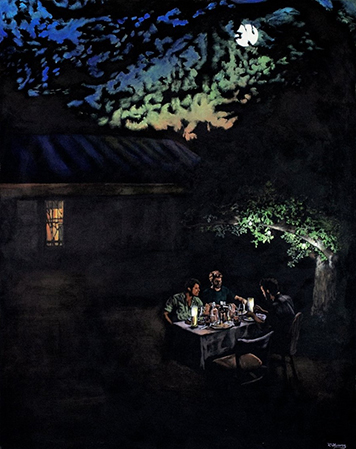
Courtesy of the artist and Alanna Miller Gallery.
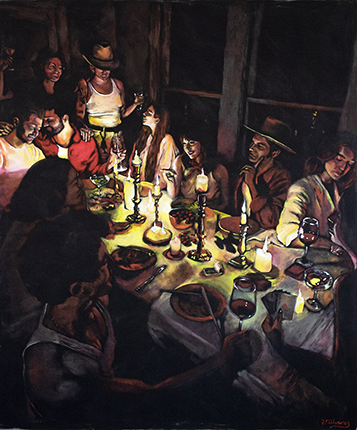
Courtesy of the artist and Alanna Miller Gallery.
RF. Alvarez was born in San Antonio, Texas, and currently lives and works in Austin, Texas. He received his BA from Wesleyan University in Connecticut and has held exhibitions at Alanna Miller Gallery, New York, Taymour Grahne Projects, London, and Ruiz Healy Gallery, San Antonio. Alvarez is represented by Alanna Miller Gallery in New York.
MICHAELA YEARWOOD-DAN
The work of Michaela Yearwood-Dan (b. 1994) aims to build spaces for the queer community, creating a sense of bliss and abundance. Community building and access are crucial components in her work: last year, she made a public mural installation for Queercircle, London, an LGBTQIA+-led charity, working at the intersection of arts, culture, and social action. Her lush paintings, works on paper, and ceramics build on her own personal narrative and reflect on the multitude of her influences, including Blackness, queerness, femininity, poetry, and Carnival culture in the context of her West-Indian heritage. Yearwood-Dan’s monumental paintings with abstract forms, heavy brushstrokes, and lyrical texts that blend with the thick paint go beyond clichés of representation, often giving an inviting feeling of home. The artist’s rich color palette has both personal and symbolic associations, as the bright hues echo the lesbian and bisexual pride flags, while her lyrical inscriptions on the thick brushes of paint create a sense of meditation, familiarity, and closeness with the viewer.
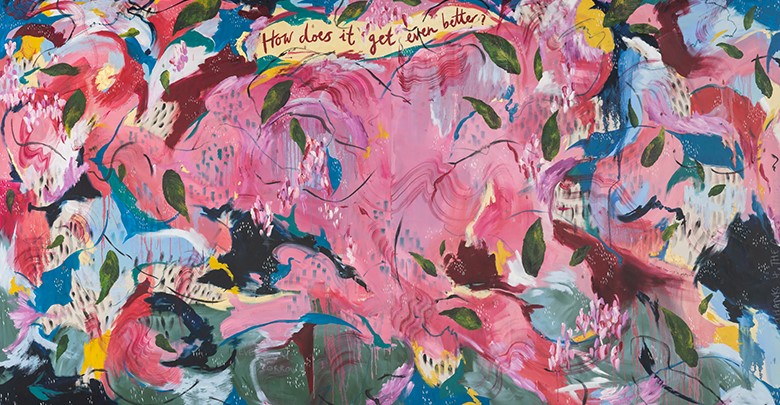
Courtesy the artist and Marianne Boesky Gallery, New York.
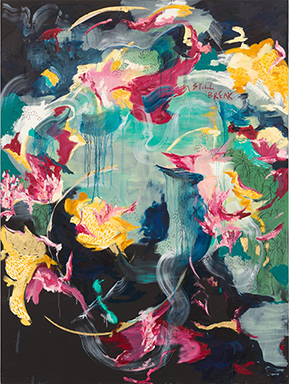
Courtesy the artist and Marianne Boesky Gallery, New York.
Yearwood-Dan attended the University of Brighton, where she received a BFA in painting in 2016. She recently closed a show at the Green Family Art Foundation in Dallas called Considering Female Abstractions, now on view at the Contemporary Arts Center in Cincinnati (through August 6th, 2023). Her work is in the permanent collections of the Hirshhorn Museum and Sculpture Garden, Washington, D.C., Institute of Contemporary Art Miami, and the Jorge M. Perez Collection, Miami, among others. She recently held a solo exhibition at Marianne Boesky Gallery in New York and is represented by the gallery.
KYLE DUNN
In his sensuous, intimate, and psychologically dense paintings, Kyle Dunn (b. 1990) reflects on queerness from an inward perspective as well as on its outward projection. Drawing inspiration from his own life and sources such as vintage gay photography, Greek antiquity, and film stills, the artist explores the dynamics of gay relationships not often represented in visual culture, along with gender roles and social expectations. Dunn’s figures include sculpted elements: made with plaster and foam, these relief paintings carry autobiographical and, at the same time, fictional accounts as they respond to social and even private expectations of masculinity. These sculptural elements, as well as Dunn’s intentional placement of his subjects often facing away from the viewer, create a sense of ambiguity: these intimate environments may evoke both peace and claustrophobia.
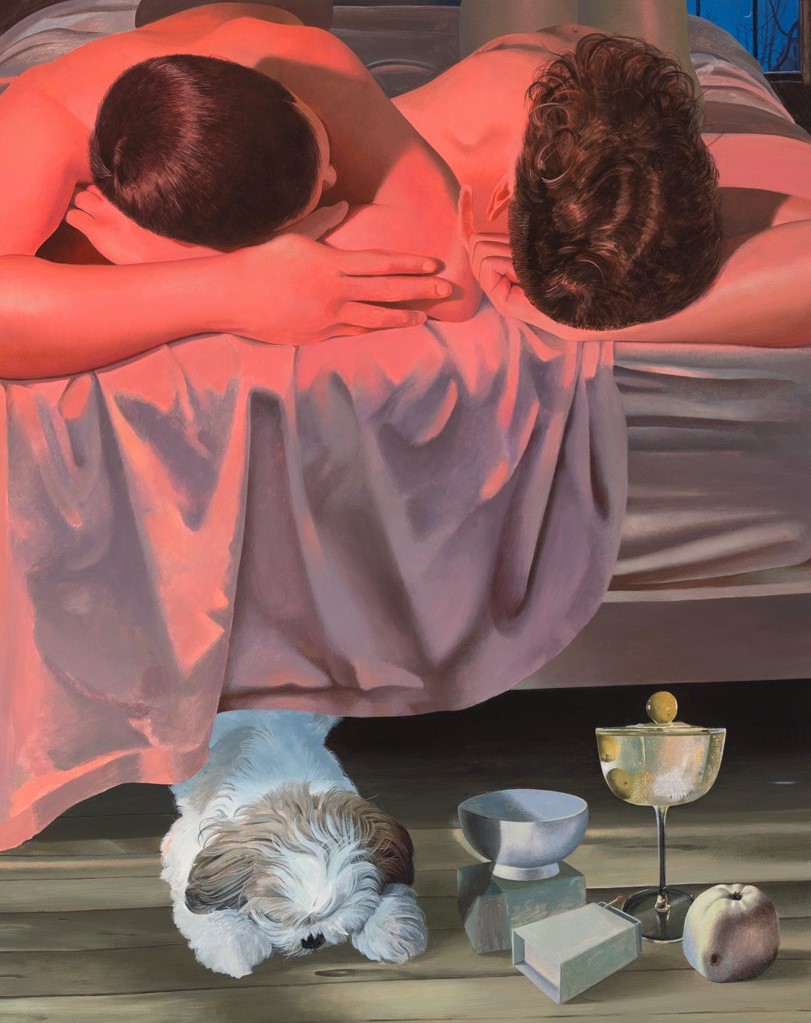
Courtesy of the artist and P·P·O·W, New York.
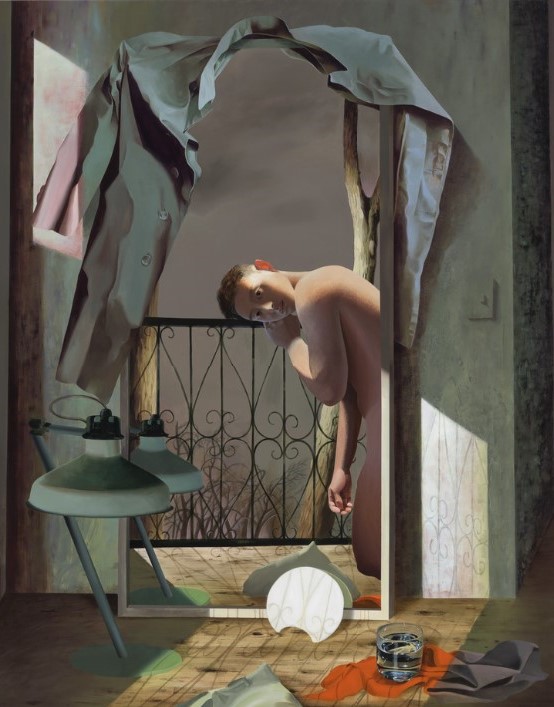
Courtesy of the artist and P·P·O·W, New York.
The sculptural elements of Dunn’s paintings reflect the artist’s study of Interdisciplinary Sculpture during his 2012 BFA at the Maryland Institute College of Art, Baltimore. He recently had a solo exhibition at P·P·O·W, New York, and is represented by the gallery. His work is in the collections of the Institute of Contemporary Art, Miami, the Sunpride Foundation, Hong Kong, and X Museum, Beijing.
NFT MARKET UPDATE
BY GREG ADAMS
NBA COLLECTIBLES MEETS NFTS
The world of NBA collectibles has expanded into the digital realm with the emergence of Non-Fungible Tokens (NFTs). These unique digital assets have revolutionized the way fans engage with and collect basketball memorabilia. After the recent 2023 NBA playoffs, we want to take a look at the new wave of NBA collectors. NBA Top Shot is an NFT platform that allows users to collect, trade, and showcase digital NBA collectibles as NFTs. NBA Top Shot NFTs are unique digital assets representing a specific moment in time during an NBA game, such as a game-winning shot or a memorable dunk. Each NFT is licensed by the NBA and the NBA Player’s Association and verified on the FLOW blockchain, ensuring its authenticity and scarcity.
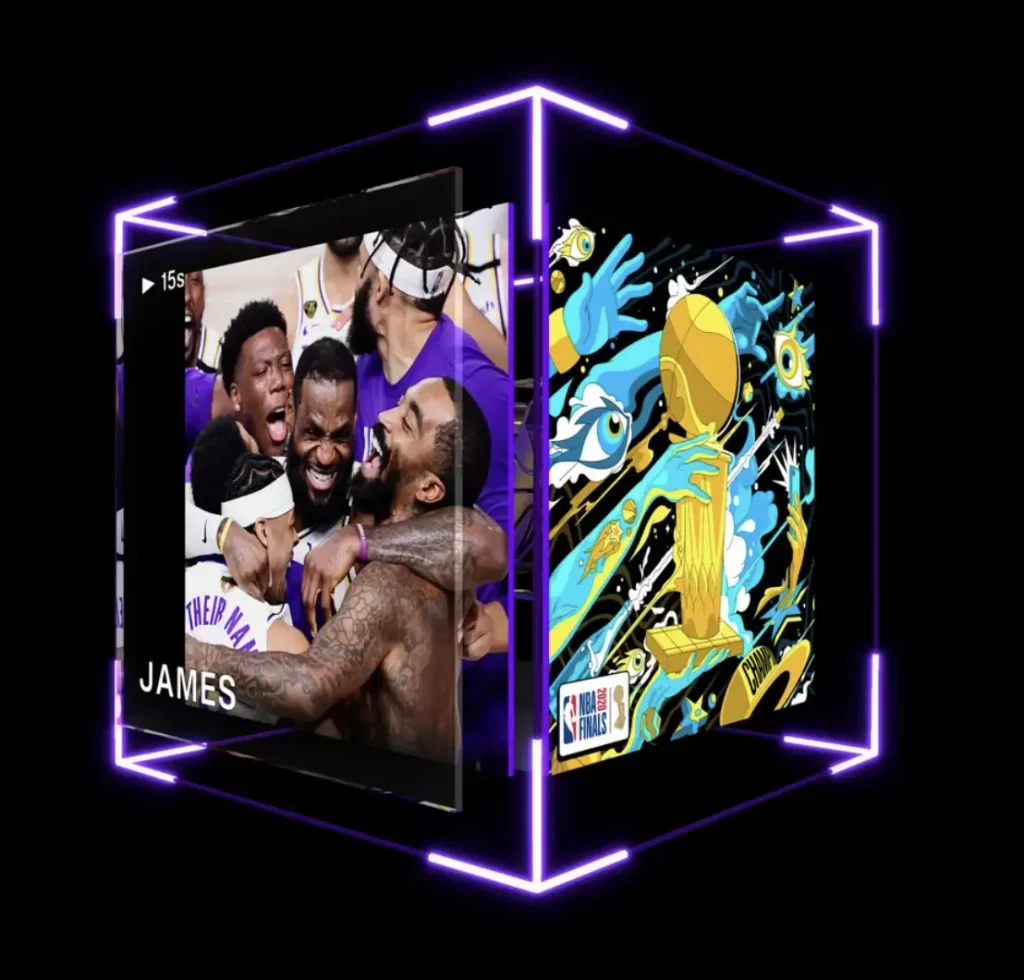
Dunk · Oct 11 2020
2020 NBA Finals (Series 1)
Legendary #23/79
9 Moments burned
Owned by @easyaces
TOP SALE:
$230,023.00
Courtesy of Nbatopshot.com.
The popularity of NBA Top Shot has multiplied since its launch in October 2020, with some NFTs selling for hundreds of thousands of dollars. The platform has attracted a wide range of collectors, including NBA fans, crypto enthusiasts, and investors. Many are former basketball card collectors and have transitioned to the new technology. NBA players have also shown interest in the platform, with some creating their own NFTs and partnering with NBA Top Shot to release exclusive collections.
NBA Top Shot has created a new type of collecting culture, where ownership and scarcity of digital assets have become highly valuable. The platform has also sparked discussions about the future of NFTs and their potential to disrupt traditional forms of art and collectibles. While the market for NBA Top Shot NFTs remains volatile, it has become a significant player in the growing NFT ecosystem.
NFT NYC 2023
The event this year was seemingly subdued as crypto winter kept a cold grip on the market. No Radio City Music Hall, no long lines, no huge sales, and far fewer community get togethers that seemed to be the highlight of 2022. It was a different mood for many that were in attendance, less celebratory but far more resilient.
Nonetheless, the culture was still very much alive. LTD.INC showcased a new way to use NFT technology as Wrangler teamed up with artist Jeremy Booth to create a custom “Western Art Dept” black denim jacket. The jacket had Jeremy’s art and an NFC (near field communication) chip that let anyone the artist met during the week scan his sleeve to receive a “proof of friendship” POAP with his art on it. The jacket was also paired with a token that verified ownership and authenticity. This particular practice may become more commonplace with luxury brands in the future as well for ease of tracking
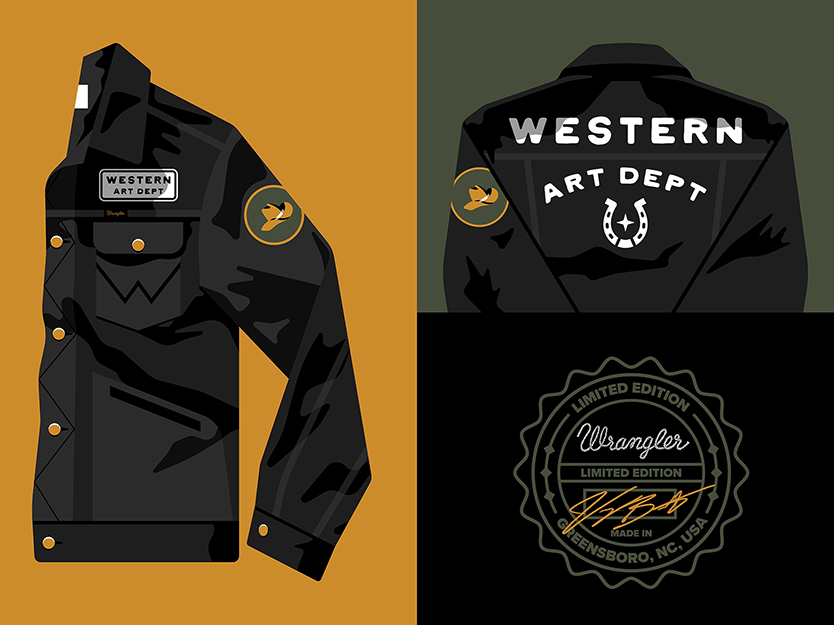
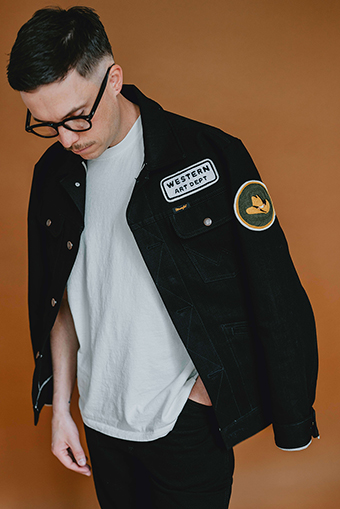
Another highlight was a scavenger hunt around the city hosted by collector and influencer G Money and his Web3 company, 9dcc. Over three days, participants had to hit places around New York City to collect POAPs (Proof of attendance protocols) to complete the challenge. At the first stop, they were treated to baseball caps, which became ubiquitous with the event, and for those that finished, there was a chance at winning a Chromie Squiggle as a prize. Overall a unique way to provide a social and marketable event using the core NFT technology.
Christie’s hosted the Next Wave: New York Edit auction on their Christie’s 3.0 platform, ending with selling 16 lots. It was a mixed batch as far as meeting price expectations, with a total of 135.5311 Eth (~$253,000) spent on the sale.
While it was hard to compare to last year, this year’s conference was nothing to scoff at. Enthusiasts, collectors, and builders are pushing this technology further, and the applications continue growing.
*All images courtesy the artists and the respective galleries.
READ PAST ISSUES OF THE SCOOP
- Reintroducing The Scoop: The Next Generation Collector – March 9th, 2023
- The Scoop #12 – December 21st, 2022
- The Scoop #11 – November 22nd, 2022
OUR SERVICES
From our advisors’ strategic insight and clear guidance to our market-leading art finance and sales agency services, we help our clients build their collection, secure their investments and appraise their assets to realize their true value.
Disclaimer
Information in this report is compiled from a number of sources; The Fine Art Group does not make any representation or warranty, express or implied, as to its accuracy or completeness. The Fine Art Group shall not be liable for any errors or inaccuracies in this report or for any actions taken in reliance on information or opinion contained in this report. The Fine Art Group are under no obligation to update or keep current the information provided herein. Information in this report is provided solely for information and marketing purposes and is not to be construed as investment advice or a personal recommendation, nor as legal, tax, regulatory, accounting or any other specialist technical advice. Capital is at risk when buying or selling the types of assets discussed in the report, and any decision to do so is solely at the risk of the buyer or seller. Prior performance is not indicative of future results. Neither The Fine Art Group nor any of its directors, officers, employees, or agents accepts any liability for any loss or damage arising out of the use of all or any part of this document or reliance upon any information contained herein.
The report contains hyperlinks or references to third-party advertising and websites other than The Fine Art Group website. Any such hyperlinks or references are provided for your convenience only. We have no control over third-party advertising or websites and accept no legal responsibility for any content, material or information contained in them. The display of any hyperlink and reference to any third-party advertising or website does not mean that we endorse that third-party’s website, products, or services. Your use of a third-party site may be governed by the terms and conditions of that third-party site and is at your own risk.
Whether you are a collector who wants to sell a few pieces, an executor faced with the fiduciary duty of monetizing an estate, an heir who has inherited pieces they don’t want or need, or an institution deaccessioning pieces that no longer fit the mission – the process can be daunting, complex, and even emotional. Having an independent advisor by your side to guide you through the often-complex sales process can ensure successful results.
Kerry-Lee Jeffery, Senior Director of Sales Agency & Advisory at The Fine Art Group, offers 10 reasons to work with an advisor for a successful sales process.
10 REASONS YOU NEED AN ADVISOR WHEN SELLING ART, JEWELRY & OTHER VALUABLE COLLECTIBLES
TANGIBLE ASSETS & SELLING SMART
- What do you have?
Begin by identifying what you have and understanding the market value of the items.
- When is the best time to sell?
Learn as much as you can about the art, jewelry, and collectibles markets. Your chance of selling successfully largely depends on the market’s current demand as well as other contributing factors such as an increased focus on an artist’s work due to a retrospective exhibit, a world record etc.
- How do you determine the best venue for sale?
Is it better to sell at a specialized sale at a large international auction house or will a regional auction house have better results? Even selecting between the different departments of an auction house is crucial; one house may have a stronger American Art department but a weaker jewelry department. In addition to venue and department, it is also important to choose the best geographic location. Should a luxury watch collection sell in New York, Hong Kong or London?
- Are estimates accurate?
It is important to have an understanding of the true market value of the asset and allow the auction estimate to serve as a tool to generate competitive bidding.
- Are fees negotiable?
Everything is negotiable when selling tangible assets. Be open to negotiations on pricing, fees, logistic costs and terms.
- How can an auction house promote your work?
Discuss with the auction house the catalogue description and positioning of your lot in the context of the sale. Will it have a prominent place during the exhibition?
- Have you considered transport restrictions?
Depending on the work and its location, its transport may be subject to cross-border trade restrictions (for instance, works made of ivory or exotic skins on handbags require special export licenses). It is also important to use established movers who specialize in art, jewelry and valuable collectibles.
- Do you have insurance?
You can keep your valuable objects insured on your home owners insurance policy until the sale occurs. If you do not have the items insured on your homeowners policy then the auction house can also provide insurance.
- It is important to read and scrutinize the terms and conditions on the sales contract.
Seller’s beware – there can be a range of terms contained in a contract and you want to make sure that you understand all the conditions prior to entering a legally binding agreement with an auction house.
- It is important to work with an advisor on the sales process.
By seeking the guidance of an independent advisor, you’ll be well-prepared to embark on a successful selling experience.
OUR SALES AGENCY SERVICES
The Fine Art Group’s dedicated Agency team can add significant value through seamless sales management, financial reporting and marketing optimization.
We take care of every detail of the sale process, from initial valuation all the way through to post-sale reporting and analysis, ensuring that the client communication and involvement is tailored throughout.
See our Sales Agency Case Studies to learn more about our services.
KATE WATERHOUSE EXPLAINS THE LAB GROWN DIAMOND MARKET
There has been a deluge of advertising and conversation lately around the phenomenon of the “lab grown diamond (LGD),” also known as “lab created diamonds,” “engineered diamonds,” “cultured diamonds,” and even “eco diamonds.” But what are we purchasing precisely, and in practical terms, what should we consider before buying? Most importantly, should jewelry collectors be buying lab grown diamonds at all?
What EXACTLY IS A LAB GROWN DIAMOND?
The advertising is correct: A lab grown diamond is chemically a diamond and not a synthetic such as cubic zirconia or moissanite (both of which can yellow over time or become cloudy with age). Using a small sample of a natural diamond and adding a process such as High Pressure High Temperature (HPHT, which has been on the market for decades for other diamond purposes and treatments) or Chemical Vapor Deposition (CVD), it was discovered that a diamond could be “grown” within the lab.
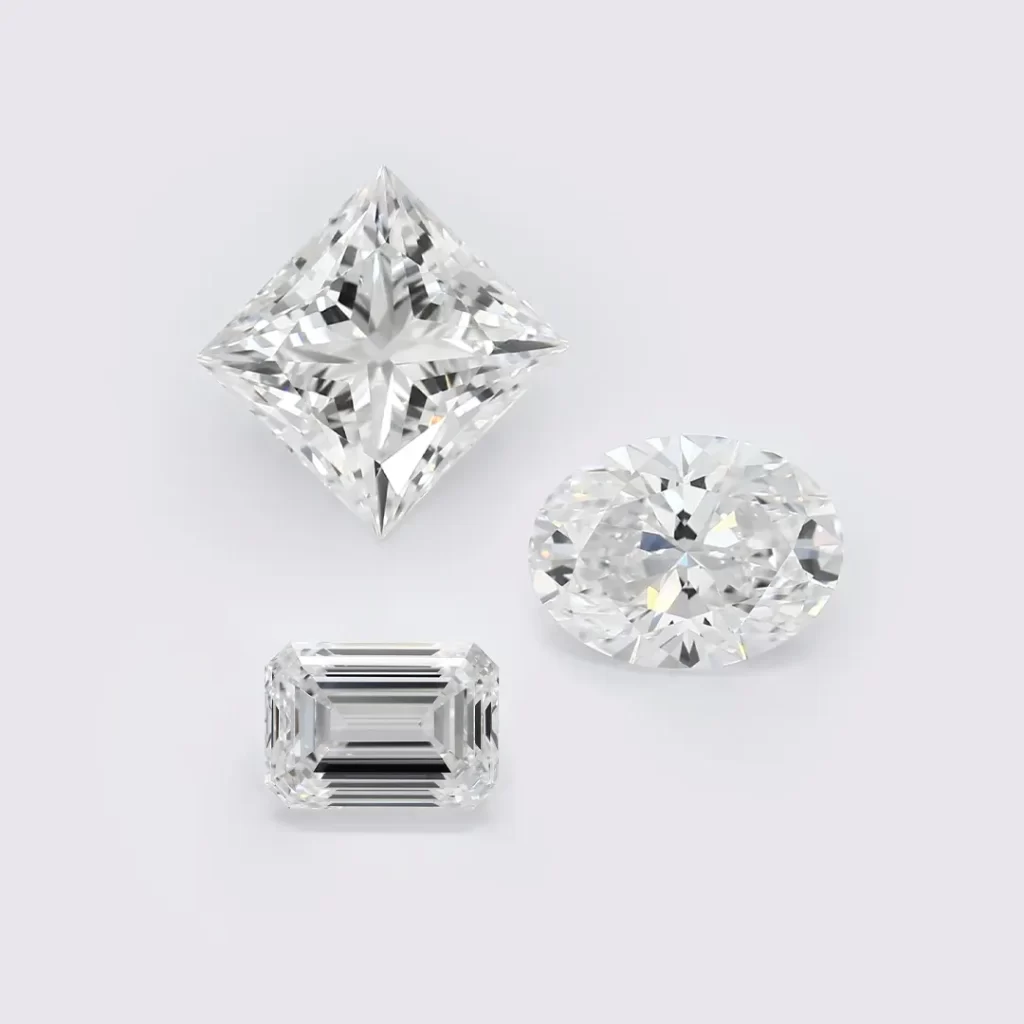
It is worth confirming that lab grown diamonds have similar characteristics to natural diamonds. However, a buyer would still want and must be mindful of color, clarity, cut, and potential fluorescence. Like with a natural diamond, these characteristics will also affect the value (i.e., a lower color and clarity grading).
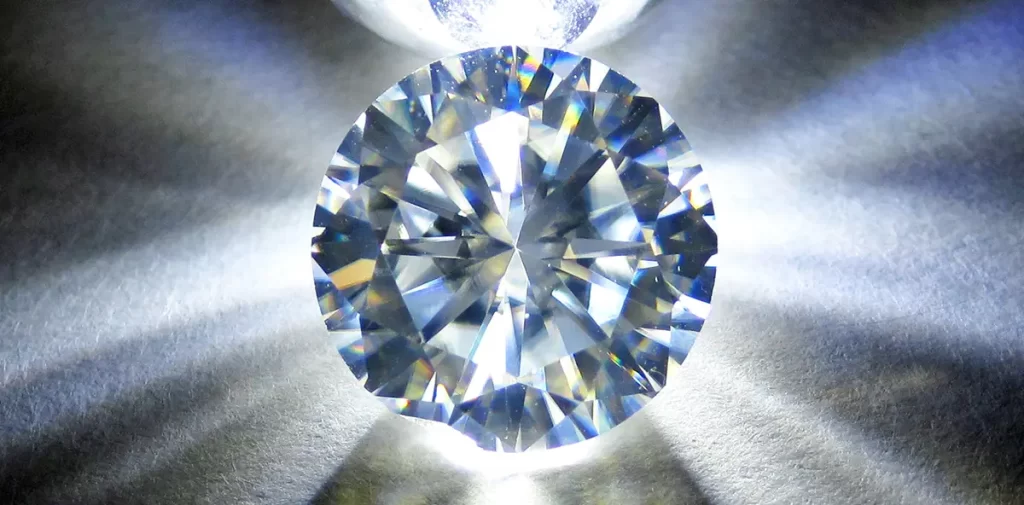
The difference is that LGB diamonds are not created by nature’s magic process occurring over millions of years but could be a “quick fix” for those looking for an affordable diamond option.
HOW ARE THEY VALUED: LAB GROWN DIAMONDS VS NATURAL DIAMONDS
When we are exploring beyond natural diamonds, consideration should be given to the LGD market; however, only if we appreciate and realize that the LGD is not a natural diamond.
Understanding the differences between these categories is essential because natural diamonds are valued based on their rarity and the current market trading price. The lab grown market does not yet have the historical trading charts to watch the long-term growth and contraction and thus should be approached and considered for purchase with caution, knowing that the future is entirely unknown and currently unregulated.
COMPARABLE MARKETS: NATURAL VS CULTURED PEARLS
We could discuss a different example where the product looks, smells, and acts like a genuine product. One immediate example is the natural saltwater pearl vs. the cultured pearl.
Authentic saltwater pearls develop within a mollusk (oyster) through a natural process. In contrast, a cultured pearl develops when a shell bead or natural irritant is introduced to the mollusk. The culturing process creates layers of luster (known as nacre) over years of care to produce the beautiful, cultured pearls we adore. By default, the origin story of those pearls has taken a different path to create a gem with which we are so familiar, and the buying public is comfortable with this category.
The issue with a lab grown diamond is similar. However, the difference is that instead of a cultured pearl being crafted on a farm, the LBD is created by technicians in a lab. The origin story differs from a diamond created by nature’s forces and thus is likely to effect the long-term potential value.
WHEN YOU SHOULD CONSIDER A LBD OVER A NATURAL DIAMOND
Many retailers will suggest that deciding what kind of diamond to acquire depends on what one can afford. A 2-carat lab grown diamond will cost approximately $2,000, while a natural diamond will cost upwards of $20,000 for the same weight, color, and clarity. In addition, some will try to encourage you to think “carbon neutral” or conflict-free. The answer to this lies entirely in the intended use.

VINTAGE & SECONDARY DIAMOND MARKET: SUSTAINABLE CHOICE WITH LONG-TERM VALUE
For those interested in sustainability, I offer the example of the secondary market to solve the problems of carbon neutrality, conflict-free, and affordability. I have had the pleasure of putting many brides into beautiful, vintage diamonds purchased privately or at auction.
The result is a purchase with an intrinsic value that has stood the test of time for generations, an addition to one’s portable wealth portfolio with historical data and fewer unknown factors in the general jewelry and gem marketplace.
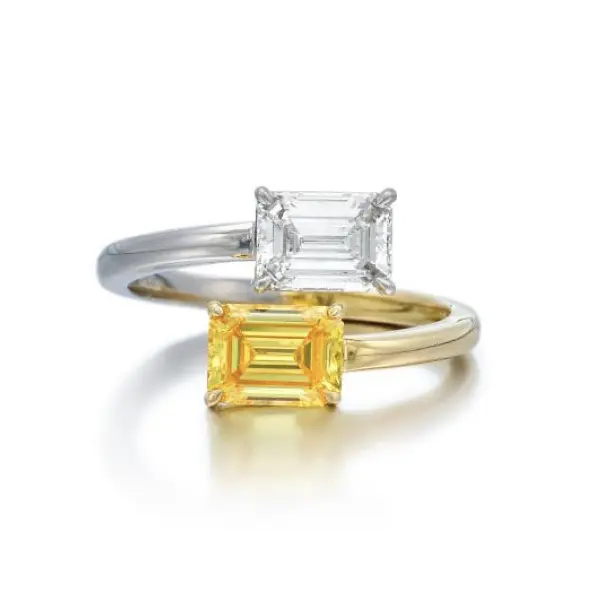
Bulgari
Fancy Vivid Yellow diamond weighing 1.02 carats
Colorless diamond weighing 1.02 carats
Sotheby’s, New York
June 14, 2023
Lot 478
SOLD: $25,400
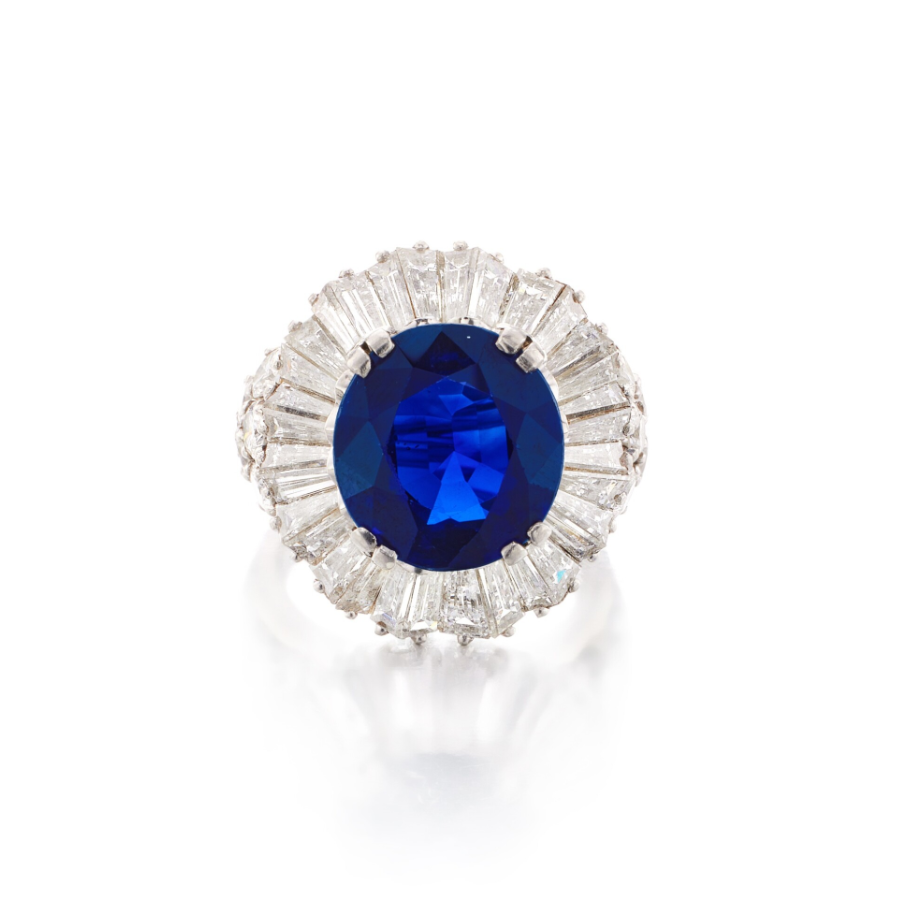
Tiffany & Co.
Sapphire weighing 8.49 carats
Diamonds weighing a total of approximately 5.25 carats
Sotheby’s, New York
June 14, 2023
Lot 235
SOLD: $50,800
However, if your goal is to purchase a large, attractive, and chemically identical diamond without concern for long-term financial viability, then the LGD market could be a good option for you.
Technology will evolve, and LGDs will continue to exist, as has the NFT, cultured pearls, and synthetic sapphires or rubies. But as with all of the above, jewelry advisors will continue to monitor the markets appropriately, recognizing that many lab grown diamond retailers have already begun to discount these goods. The market continues to stabilize, and new retailers will enter lab grown gem space.
I will end with a reminder to consumers to consult a jewelry advisor before any large diamond purchase. A jewelry advisor will clarify any confusion between the markets and assist you in better understanding your long-term financial goals related to your jewelry collection.
RELATED CONTENT
OUR SERVICES
Offering expert Advisory across sectors, our dedicated Jewelry Advisory Team combine strategic insight with transparent advice to guide our clients seamlessly through the market. We always welcome the opportunity to discuss our strategies and services in depth.



